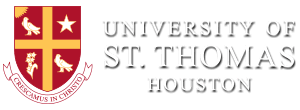Be Bold Blog
The University of St. Thomas (UST) is Houston’s Catholic University, committed to the Catholic intellectual tradition and the dialogue between faith and reason. Our blog is dedicated to helping you explore your future career possibilities and how to make the most of your college experience.
Which Grade Should I Teach?

Advice for Aspiring Educators
Once you’ve committed to pursuing a career in education, there are a few other decisions you’ll need to make. One of the questions you’ll inevitably ask is, “Which grade should I teach?”
Perhaps your classroom exposure has been limited — or you’ve only worked with high schoolers and are curious to see what teaching younger kids is like. No matter which level you end up in, every educator shares the same main responsibility: to build relationships with their students and figure out what ignites their passion for learning.
Deciding which grade to teach doesn’t have to be difficult. In fact, a quality undergraduate education program should assist you by providing ample opportunities for discussion and teaching or observing different age groups.
If you’re still pondering which age group you’d like to work with, keep reading and use the tips and information in this article to help guide you. We enlisted Dr. Ana-Lisa Gonzalez, interim dean of the School of Education and Human Services at University of St. Thomas (UST), to provide some expert advice to assist you.
Why do I have to choose a grade to teach?
Regardless of who your students are, your fundamental responsibilities remain the same. Today’s teachers must be effective at working with diverse students in a variety of different settings, whether it’s public or private school, well-funded or under resourced, urban or rural. But the realities of teacher training and licensure require you to commit to an age group and/or subject, ideally by your sophomore year of undergraduate school, for several reasons.
Undergraduate teaching programs have many different tracks to accommodate all the possible combinations of student ages and specialty subjects. Often, these classes are sequenced, meaning you have to take them in a specific order. If you were to begin on one track and then decide to switch, you might end up extending your education timeline a bit.
“Most students — I would say 95% — start college knowing what age group they want to work with and stick with it,” says Dr. Gonzalez. “It’s very rare for UST students to switch programs. A big part of that is the coaching that starts early on in the program.” She explains that the UST program provides ample opportunities for students to participate in fieldwork at every level, giving them the exposure they need to be confident in their decisions.
What grade should I teach? Understanding your options.
Despite what you may have heard anecdotally, there is no “easiest” or “best” age group to teach. It’s entirely subjective. Every teacher has unique strengths, interests and passions to bring to the classroom. And there are unique advantages and challenges to working with students of any age, whether it be children, adolescents or young adults. Knowing and understanding the distinct stages of development will help you make an informed decision.
Let’s start by defining the different age groups. While the exact age ranges for these categories can vary slightly, students in the United States education system are generally divided into three main categories:
- Pre-K/Elementary school: 5–11 years old
- Middle school: 11–15 years old
- High school: 15–18 years old
As a teacher and teacher-trainer, Dr. Gonzalez has worked with students of all ages throughout her career. When she’s tasked with helping an aspiring educator decide which grade to teach, she encourages them to take time to understand the nuances of each level and reflect on their personal preferences.
“Every age group is so different, whether it’s cognitively, socially, emotionally, physically — you name it,” she explains. “You have to know what milestones, developmental stages and behaviors you want to contend with as a teacher because it really depends on what you are interested in.”
To help you begin your research, we’re breaking down each of these age levels. Learn more about what you can expect from each group of students and the typical characteristics that effective teachers possess.
Teaching pre-k and elementary students
Teachers of young children are accurately described as “expert generalists.” They are responsible for teaching multiple subjects — math, science, art, reading, grammar, English, writing, social studies — all to one class. Students at this age respond well to structure and routine balanced with novelty and exploration.
Elementary school teachers are often creative and energetic and have no problem slipping into the role of “entertainer” or being a little silly at times. Educators of very young students have a big responsibility in that they are setting up learners with foundational skills that will be used throughout their lifetimes.
One oft-cited challenge of this demographic is that children of this age are learning that the world does not, in fact, revolve around them exclusively. In a classroom setting, they sometimes have to wait before getting their demands or needs met. This is a natural progression from egocentric thinking to a more empathetic worldview that includes logic and deductive reasoning.
Some behavioral and developmental hallmarks of elementary students are that they:
- Require less constant supervision than toddlers
- Are learning to be more independent and to make good choices
- Often struggle with self-discipline and self-regulation
- Frequently test boundaries and break rules as they develop their senses of right and wrong
- Are usually eager to please and crave acknowledgment and recognition from authoritative figures
- Benefit from logical consequences to help them learn from their mistakes
- Have primary influences of parents and family
- Are extremely curious, often asking many questions
Teaching middle school students
If you remember your middle school years as being difficult and confusing, you are not alone. This is a critical transition period from child to young adult, and it’s normal to grapple with the flood of changes.
“Puberty and adolescence are traumatic, when you think about it. Kids aren’t the same after puberty — they don’t think the same way, their bodies and hormones are different, their personalities and attitudes are in flux,” Dr. Gonzalez explains. “Middle school teachers are so, so important in the lives of their students. They really need adults who are patient and positive role models.”
At this level, the curriculum begins to change formats and moves away from a generalist curriculum to a separate-subject model found in high school. Instructors will often teach one or two subject areas, and students start to move around to other classrooms. Middle school teachers must be adaptable and able to empathize with students whose moods and behaviors can vary widely from one day to the next.
Some behavioral and developmental hallmarks of middle school students are that they:
- Experience drastic body changes and scary or unfamiliar emotions as a result of puberty
- Value primary influences that shift from family to friends and peers
- Often struggle with interpersonal relationships, teasing, bullying, feeling out of place
- Feel a strong urge to become independent and create their own identities
- Frequently display passive-aggressive behavior, self-consciousness, moodiness and fluctuations in self-esteem
- Experience heightened emotions and tend toward hyperbolic reactions
Teaching high school students
High school teachers are subject matter experts. They specialize in one topic and bring their enthusiasm and knowledge to the classroom in hopes of engaging students in the subject and inspiring them to discover their own passions. At this age, students often have adult problems they are trying to solve without the benefit of experience.
High school teachers have the chance to engage students in deep and important conversations, frequently acting as de-facto mentors. They are also tasked with preparing students for the realities of life after high school, meaning they have to carefully consider their influences and guide students without overstepping.
Some behavioral and developmental hallmarks of high school students are that they:
- Begin to experience increased levels of responsibility (sports, extracurricular activities, part-time jobs)
- Often feel intense peer pressure and the urge to conform to the crowd
- May start having serious romantic relationships as social skills are becoming more honed
- Grapple with their plans for the future – whether to attend college or join the workforce or something else entirely
How do I decide which grade to teach?
Now that you have a better idea about the expectations, similarities and differences that come with each age group, you’ll need to start examining your own strengths, weaknesses, interests, qualities and unique life experiences that may influence your decision. Start by asking yourself questions like:
- What are my motivations for becoming a teacher?
- What are my strengths as a teacher?
- Which skills do I need to develop further?
- Am I a generalist who likes teaching all kinds of subjects? Or am I mostly interested in one or two topics I’m passionate about?
- Do I have enough classroom/fieldwork exposure to inform my opinions? Or am I making assumptions based on my own experience as a student?
Keep in mind that no matter what path you pursue, all effective teachers need the following skills:
- Communication
- Critical thinking
- Emotional intelligence
- Empathy
- Enthusiasm
- Leadership
- Organization
- Patience
- Planning
- Teamwork
- Time management
Get the individual support you need to become a world-class educator
You’re well on your way to leading your own classroom. The next step is choosing a high-quality undergraduate program that will prepare you for the rigors and rewards of a career in education. Start your search by learning more about UST’s Bachelor’s in Education degree that is designed to equip you with all the knowledge, tools and experience necessary to thrive as a teacher.
Ready to take the next step?
Related articles
About UST
The University of St. Thomas (UST) is Houston’s Catholic University, committed to the religious, ethical and intellectual traditions of Catholic higher education. For more than 70 years, we’ve been graduating students like you into successful careers in medicine, education, business, public administration and more – throughout Houston and across the globe.

